Pioneers to Professionals
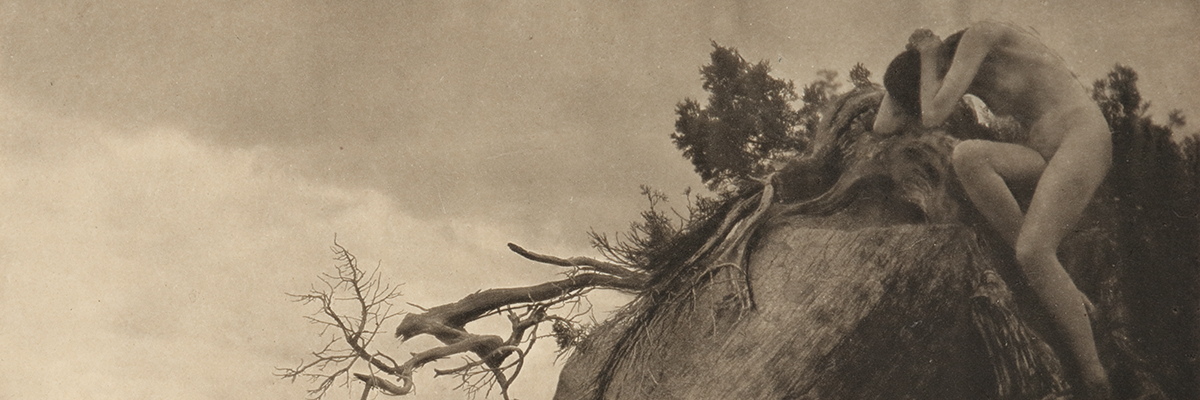
Anne Brigman (American, 1869–1950), Finis (detail), ca. 1910, photogravure, 5 3/8 × 9 7/16 inches, purchase, 1979.149.
At the turn of the twentieth century, the global emergence of the “New Woman,” a cultural icon who represented an ideal of progress, independence, and professional success for women, coincided with major transformations in the practice of photography that greatly expanded possibilities for women interested in the medium. The invention of industrially produced negatives and lightweight and simpler cameras, as well as the rise of amateur camera clubs offering instruction and community, made photography more accessible. The explosion of the illustrated press in the 1920s spurred a greater market for photographs, especially in the fields of journalism, advertising, fashion, and portraiture. As more women sought to establish careers outside the home, photography thus increasingly became a viable career, and many of these women in turn mentored, befriended, and supported other women photographers.
Women still faced numerous barriers to success: some found their careers cut short by motherhood, others suffered under conditions of hardship and political exile, and still others have been relegated to the sidelines, overlooked or forgotten as the history of photography began to be written during the second half of the twentieth century. In this period, women of color especially suffered from lack of opportunity and delayed recognition by critics, curators, and institutions—a fact that is made visible by the absence of women of color in this section.
-
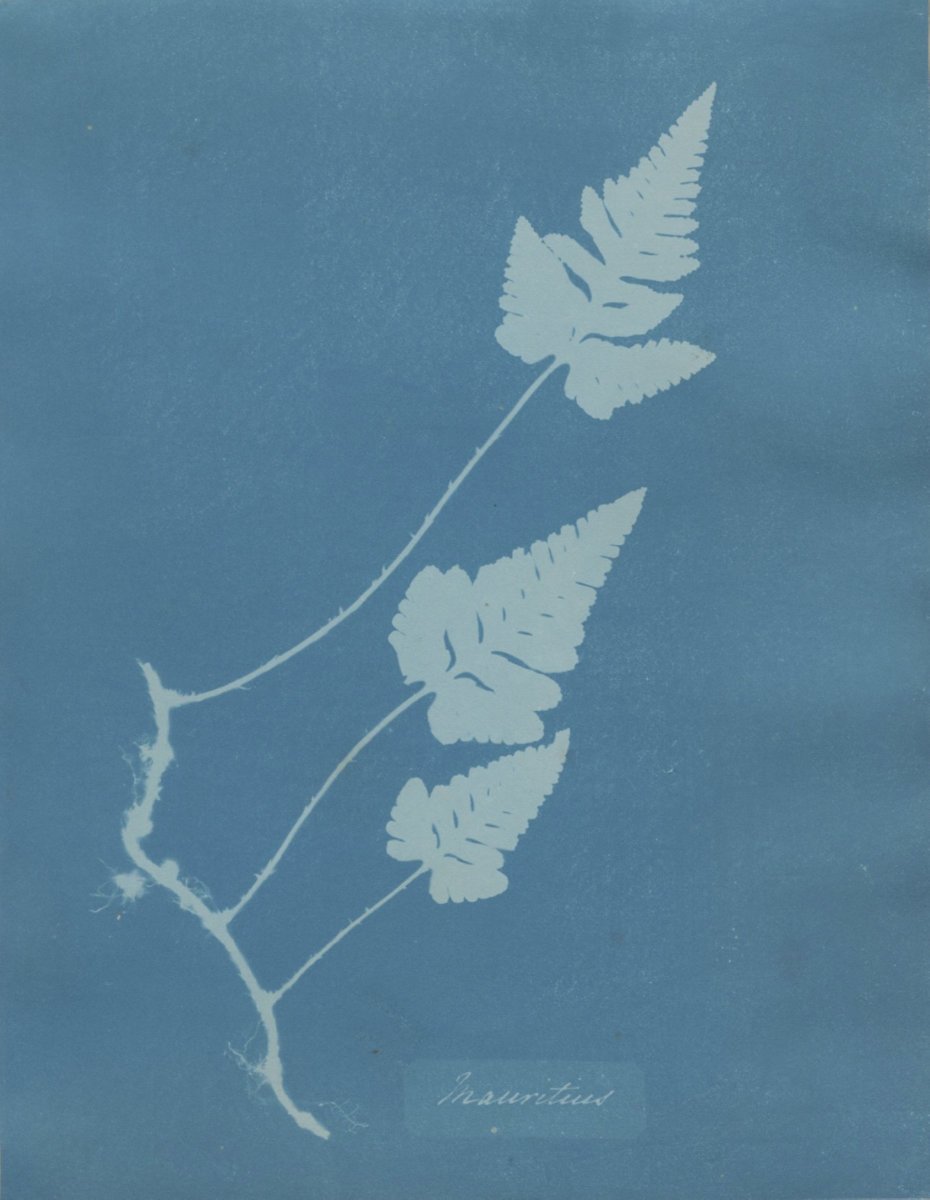
The earliest known woman photographer and the first person to make a photo book, Anna Atkins was a pivotal figure of photography and botany in Britain. During the 1840s and 1850s, she produced several extensive series of “photographical impressions” (photograms) using the cyanotype process, a camera-less process in which objects are placed onto a sensitized sheet of paper and exposed to light. The unexposed areas under the object remain white, while the areas hit by the light turn a distinct Prussian blue. Delicate and precise, Atkins’s photograms were meant to function primarily as scientific records categorizing the natural world, and in this case, the global reach of the British empire (Mauritius was a colony at the time).
Mauritius, from Cyanotypes of British and Foreign Flowering Plants and Ferns
Anna Atkins, British, 1799–1871
1851–1854
Cyanotype
Image: 10 1/8 × 7 15/16 inches
Gift in honor of Edward Anthony Hill
2019.1 -
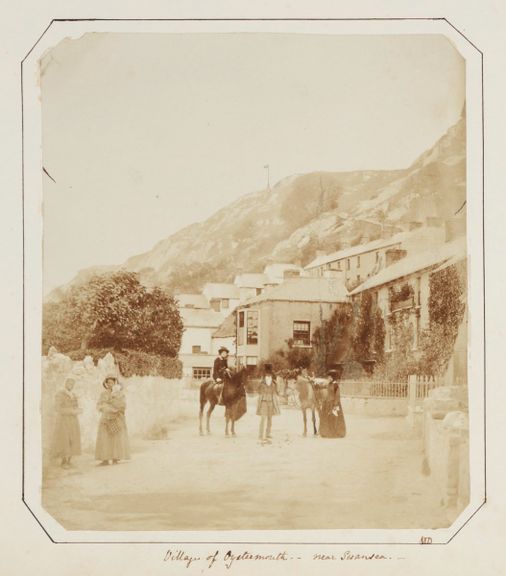
The first female photographer in Wales, Mary Dillwyn broadened what was considered worthwhile subjects to photograph. Primarily making still lifes or portraying the lives of women and children, Dillwyn used a smaller camera than many of her male counterparts, including her older brother, who was also a photographer. The camera’s shorter exposure times enabled her to make more spontaneous photographs of friends and family and to capture street scenes.
Village of Oystermouth—Near Swansea
Mary Dillwyn, English, 1816–1906
ca. 1853
Salted paper print
5 x 4 3/4 inches
Purchase
1979.138 -
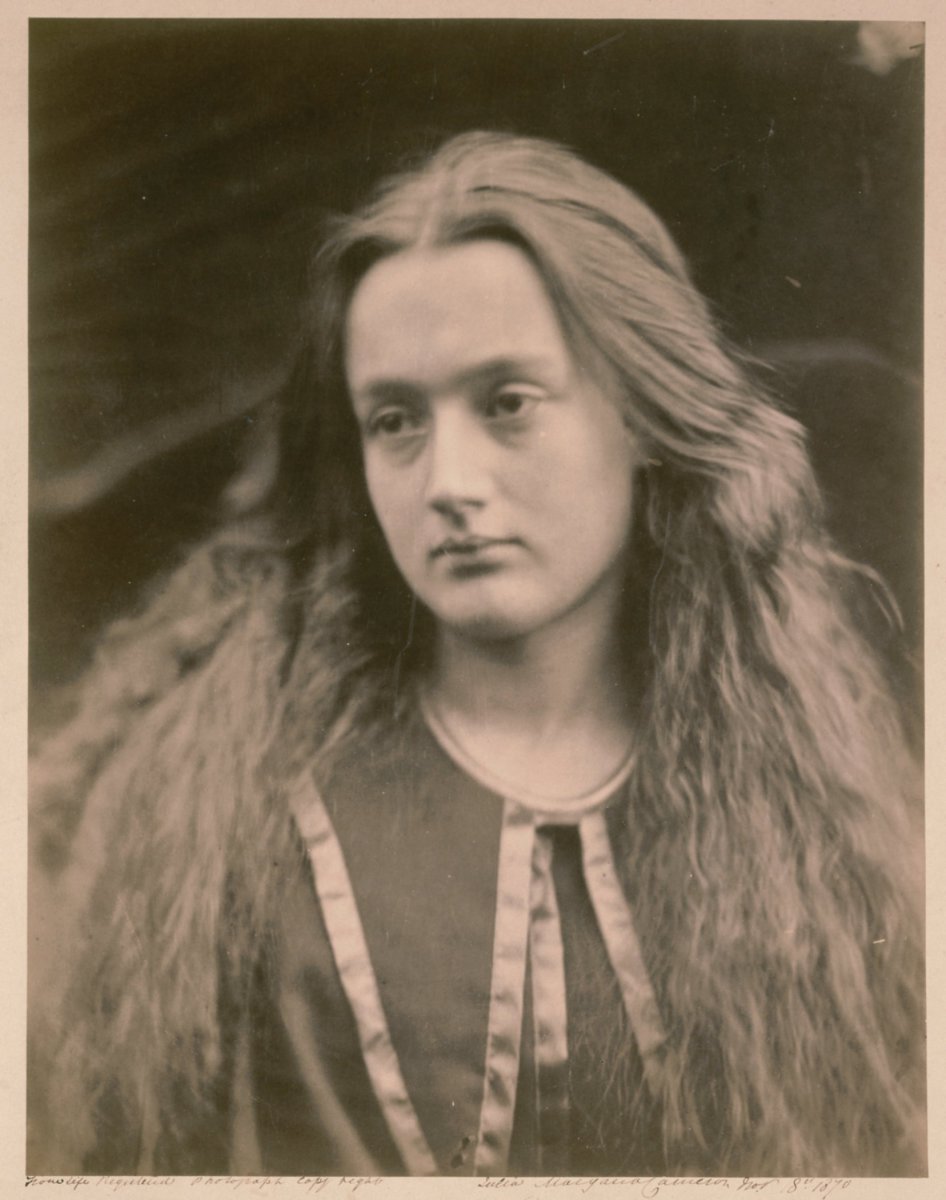
Julia Margaret Cameron took up photography in 1863 at the age of forty-eight, after her son and daughter-in-law gave her a camera, saying, “It may amuse you, Mother, to try photography.” Within a few years, Cameron mastered the tricky wet-collodion process and startled the world of Victorian photography with her tender portraits and unprecedented theatrical compositions, many inspired by literature. Her works prominently feature women and possess a translucent, soft-focus quality that confounded contemporary critics accustomed to more detailed, precise images. Today Cameron’s photographs are lauded for their alluring beauty and their ability to suggest the subjects’ interior experiences. Her daughter-in-law, Annie Chinery Cameron, seen here, was a frequent subject.
Mrs. Ewen Hay Cameron
Julia Margaret Cameron, British, born India, 1815–1879
1870
Albumen silver print
12 15/16 × 10 1/16 inches
Purchase
74.147 -

Little is known about Carla Heinzen’s photography. Born in London to a violinist and a social worker, Heinzen exhibited photographs in American and European exhibitions in the late 1920s and early 1930s under a variety of exotic names, including Karma-Carla Heinzen De Burgeni and Madame H. de B. Karma. Made with the platinum print process that was popular among amateur and art photographers in the 1920s, this sensitive floral study reveals her talent and her familiarity with the leading photographic trends of the day.
Magnolia Still Life
Carla Heinzen, American, born England, 1897–1972
ca. 1929
Platinum print
9 5/16 × 7 3/8 inches
Purchase
1977.93 -
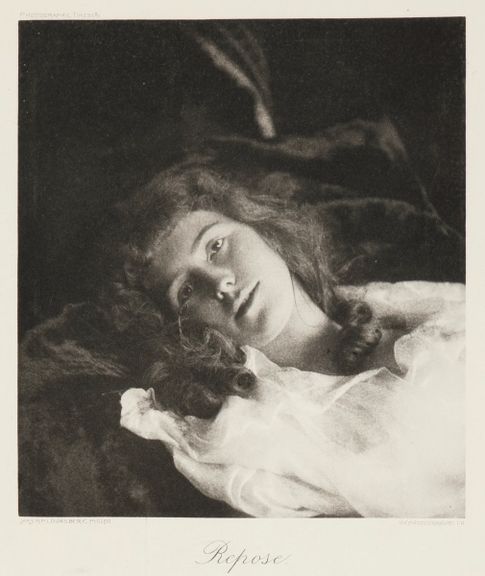
Edith H. DeLong was a prominent member of the New York Camera Club and an advocate for the arts. This delicate portrait was the cover of The Photographic Times in 1894 and garnered praise: “Most of our readers will be familiar with this lady’s excellent photographs. . . . There are many points in the arrangement and lighting of the model . . . which will be well for the photographer, both amateur and professional, to study.” Despite this recognition, her name is not found easily in photography’s history and was not even in the High’s database last year. The print had been miscredited, attributed to her husband, and misspelled—which exemplifies how easily women’s histories can disappear due to name changes, errors, and formal conventions.
Repose
Edith H. DeLong, American, 1858–1940
1894
Photogravure
5 x 4 1/2 inches
Purchase
1978.106 -
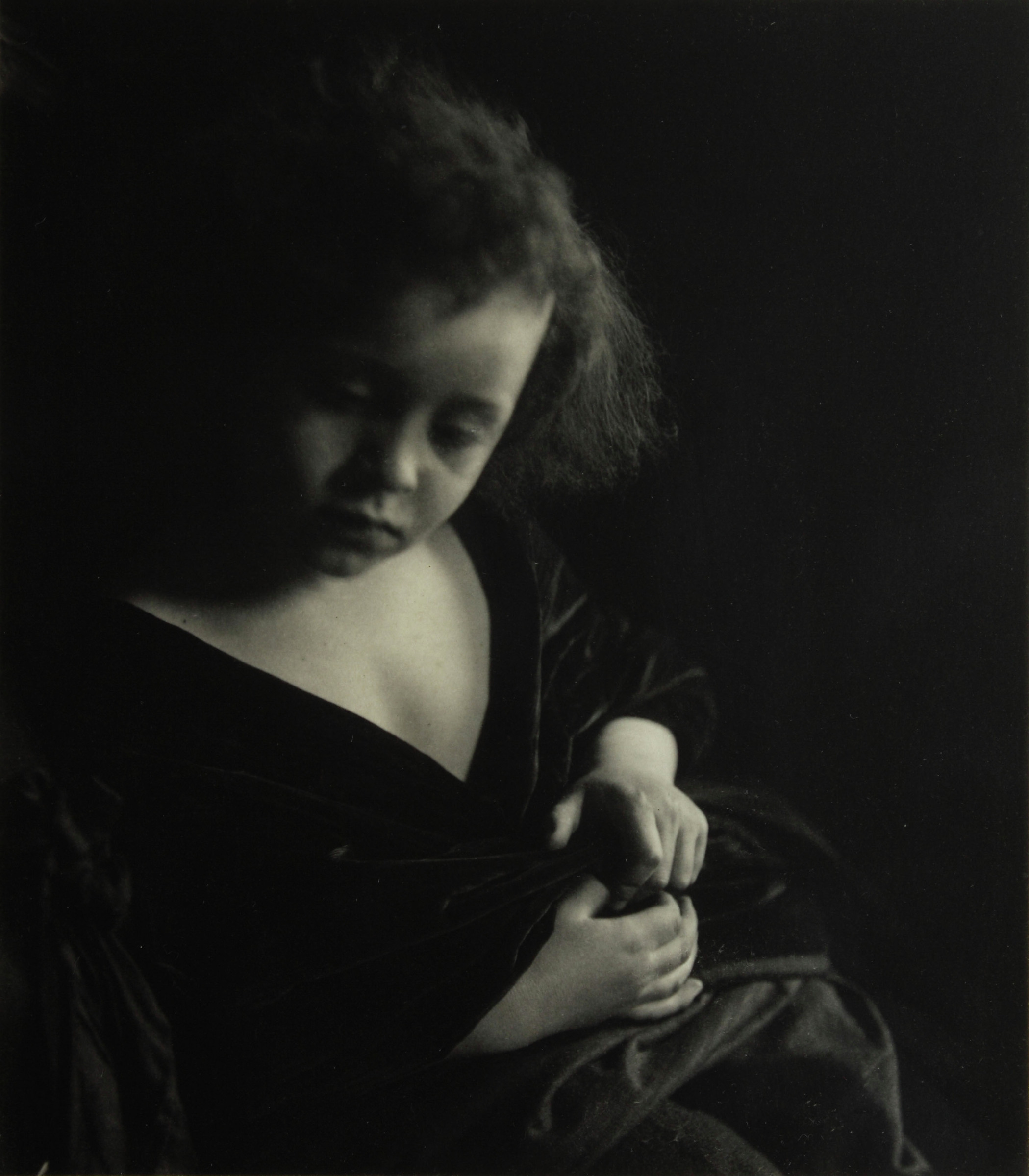
In 1889, as a thirty-seven-year-old unhappily married mother of three, Gertrude Käsebier made the unusual decision to attend art school. She quickly mastered photography, and by 1899, her work had caught the eye of Alfred Stieglitz, at the time the most influential figure in photography, who called her “the leading artistic portrait photographer of the day.” Renowned for her delicate, atmospheric photographs depicting women, girls, and motherhood, she was also an outspoken advocate of photography as a career for women, writing in 1898, “I earnestly advise women of artistic tastes to train for the unworked field of modern photography. It seems to be especially adapted to them, and the few who have entered it are meeting a gratifying and profitable success.”
Portrait of a Young Girl
Gertrude Käsebier, American, 1852–1934
ca. 1910
Platinum print
5 × 4 7/16 inches
Purchase
1977.62 -
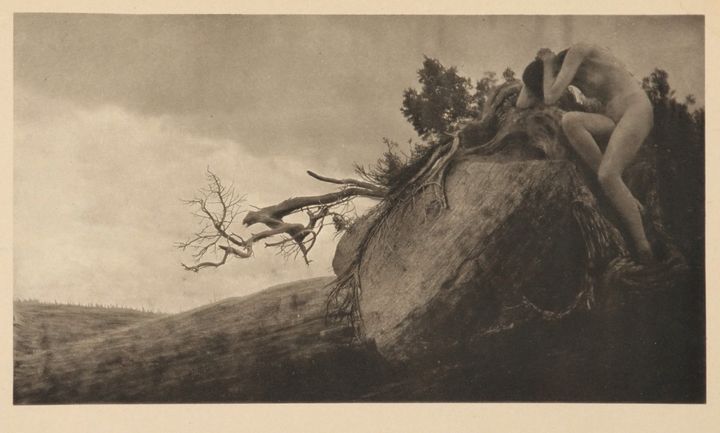
Anne Brigman was a trailblazing photographer who took up photography as a hobby in 1901. Within a handful of years, she had established herself as a leading member of the Photo-Secessionist movement, which championed photography as a fine art and embraced highly manipulated, “painterly” photographs. Brigman’s exaltation of the nude female body in harmony with nature exemplified the growing bohemian spirit on the West Coast at the dawn of the twentieth century. Like much of Brigman’s work, this view is artfully staged and echoes the modern dance aesthetics of her contemporary, Isadora Duncan. Brigman was an outspoken champion of women’s empowerment, sharing her views on the importance of female independence in a 1913 article titled “Fear Retards Woman.”
Finis
Anne Brigman, American, 1869–1950
ca. 1910
Photogravure
5 3/8 × 9 7/16 inches
Purchase
1979.149 -
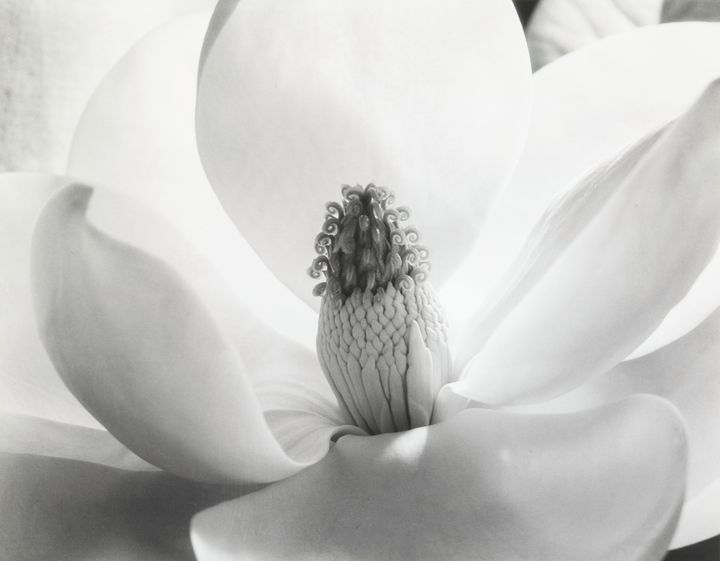
Imogen Cunningham bought her first camera in 1901, but it was only after a chance encounter with photographer Gertrude Käsebier’s work in 1908 that she pursued photography seriously. As a student at the University of Washington, she studied photographic technique and chemistry, paying her way by photographing plants for the botany department. Within a few years, she established a studio and embraced a sleek, more rigorous approach to light, form, and space. To expand and deepen her technique and hone her ability to capture the translucent qualities of light, she spent two years photographing magnolia flowers.
Magnolia Blossom
Imogen Cunningham, American, 1883–1976
1925
Gelatin silver print
10 1/4 × 13 inches
Purchase with funds from a Friend of the Museum
74.74 -
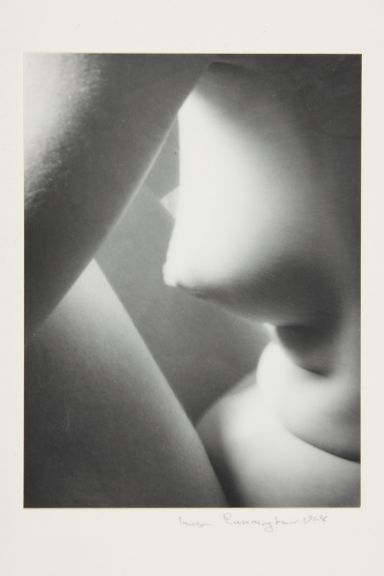
Triangles
Imogen Cunningham, American, 1883–1976
1928
Gelatin silver print
3 3/4 × 2 3/4 inches
Purchase with funds from a Friend of the Museum
74.72 -
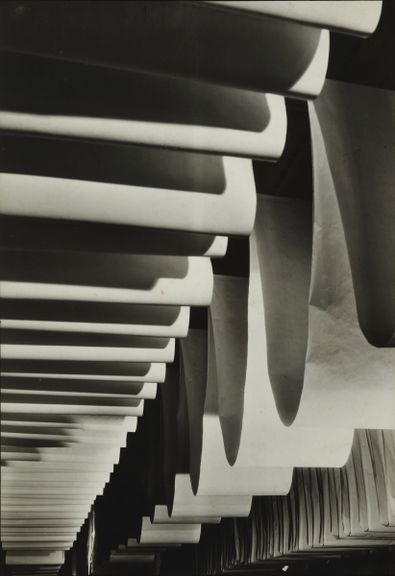
Margaret Bourke-White achieved many firsts. Hired by Henry Luce in 1929, she was the first staff photographer for his Fortune magazine. She produced the cover for the inaugural edition of LIFE, as its first female photographer, in 1936. As a correspondent during World War II, she captured the German invasion of Moscow in 1941, was the first woman to accompany Air Corps crews on bombing missions in 1942, and documented the liberation of the German concentration camps in 1945. This photograph of drying newsprint, made for a Price Brothers Paper publicity campaign, epitomizes her signature style: a precise, industrial, formally harmonious aesthetic that captured the spirit of the “machine age.”
Newsprint Drying—Price Brothers
Margaret Bourke-White, American, 1904–1971
1932, printed 1930s
Gelatin silver print
13 1/4 × 9 3/16 inches
Purchase with funds from Georgia-Pacific Corporation
1987.148 -
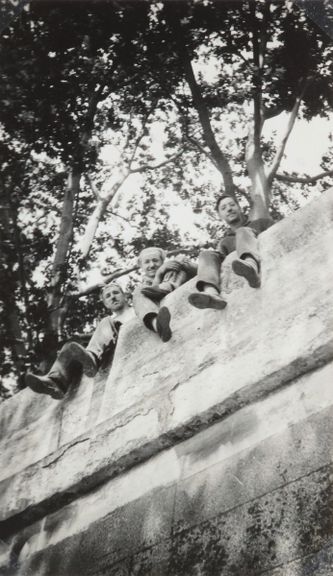
Dora Maar was a leading Surrealist artist who worked across photography, collage, and painting. After studying art in Paris, she opened a photography studio in 1931 and quickly achieved success across genres, including portraiture, fashion, advertising, and nude photography. Her work outside of the studio focused on making trenchant observations of social issues in her street photographs and exploring erotic, fantastical, and provocative imagery in highly inventive images that combined photography and collage. Despite her artistic achievements, until recently Maar’s career had been overshadowed by her romantic relationship with Pablo Picasso, for whom she served as model and muse.
Untitled
Dora Maar, French, 1907–1997
ca. 1930
Gelatin silver print
4 1/8 × 2 3/8 inches
Gift of Steve Nordman
2020.230 -
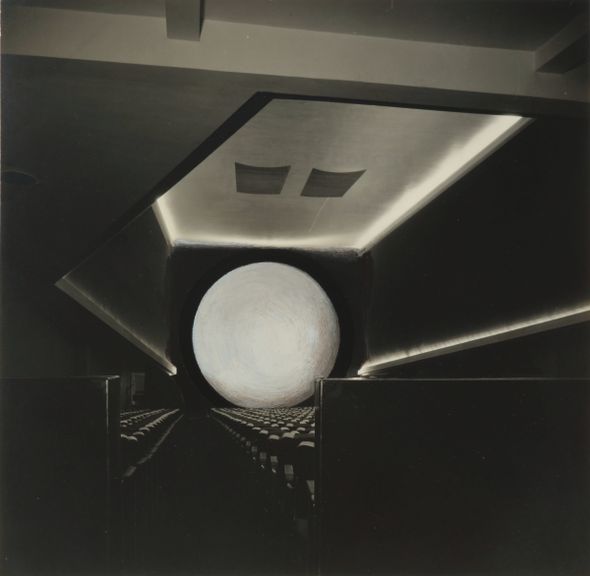
The daughter of designer Lucian Bernhard, Ruth Bernhard studied art in Berlin and worked in a commercial photography studio before moving to New York in 1927. There, she served as a darkroom assistant to Ralph Steiner and quickly established herself in Greenwich Village’s vibrant lesbian community, where she became close friends with photographer Berenice Abbott and her partner Elizabeth McCausland. Although she is best known for her abstract still lifes and sensual female nudes, Bernhard also worked for many leading architects and industrial designers, including the Austrian-born Frederick Kiesler, whose remarkable New York Film Guild building is pictured here.
Film Guild Cinema
Ruth Bernhard, American, born Germany, 1905–2006
ca. 1946
Gelatin silver print
7 5/16 × 7 7/16 inches
Purchase with funds from Georgia-Pacific Corporation
1985.235 -
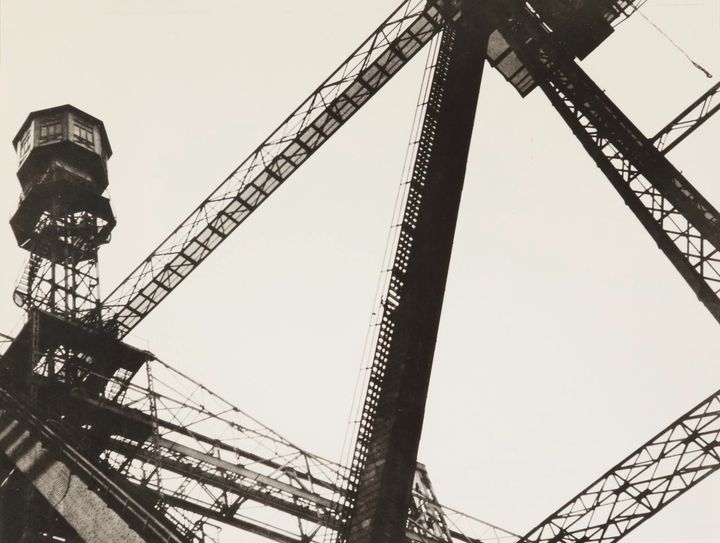
Like many women who entered the profession in the interwar years, Else Thalemann got her professional start by working for a prominent photo agency, producing reportage and advertisements for a burgeoning field of illustrated magazines. With its veering angles and radical cropping, this view of an industrial structure reveals Thalemann’s familiarity with modernist ideals in photography that prized the camera’s mechanical, abstracting tendencies. Unfortunately, the full range of Thalemann’s achievement is not well known because her Berlin studio was hit by Allied bombs during World War II, destroying almost all her negatives.
Gerust konstruktion (Metal frame structure)
Else Thalemann, German, 1901–1984
ca. 1929, printed 1946–1950
Gelatin silver print
6 3/4 × 8 3/4 inches
Gift of Richard and Ellen Sandor Family Collection
2000.264 -

Alma Lavenson, who first learned photography by watching a technician develop pictures at the local drugstore, is recognized as one of the leading West Coast photographers of the 1920s and 1930s. Along with her mentor Imogen Cunningham, she was a founding member of Ansel Adams’s influential Group f/64, a movement that embraced a straight, unmanipulated approach to photography. This dizzying view of a ship’s prow, with its dynamic lines and patterning of light and ropes, epitomizes Lavenson’s distinctively modern approach to form and subject matter.
Figurehead (Sailing Vessel)
Alma Lavenson, American, 1897–1989
1932
Gelatin silver print
9 3/4 × 7 1/4 inches
Gift of L. Wahrhaftig
2000.226 -
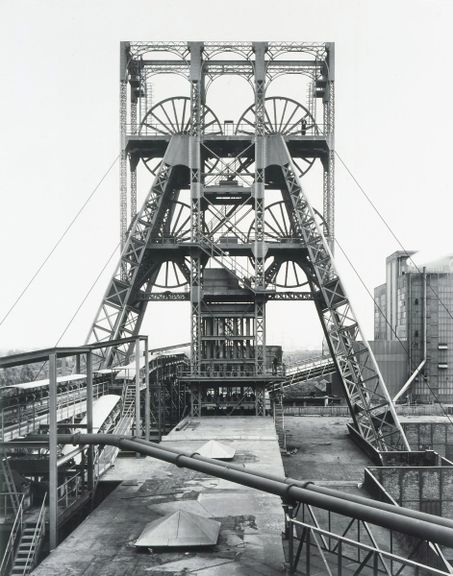
German couple Bernd and Hilla Becher are known for their coolly detached studies of industrial and building architectures in Europe and North America. Their stark, monochromatic work is typically displayed in grids of multiple images that highlight both the commonalities and differences in the form and function of the structures. In this photograph, the complex structure and the elaborate ornamentation of its parts are given equal importance. This photograph is noteworthy within the Bechers’ oeuvre because it includes human figures and even a rare self-portrait: Hilla can be seen standing in the upper reaches of the tower, along with an unidentified man on a platform below.
Winding Tower, Beringen Mijn, Beringen
Bernd Becher, German, 1931–2007 Hilla Becher, German, 1934–2015
1991
Gelatin silver print
24 × 19 inches
Purchase
2000.214 -
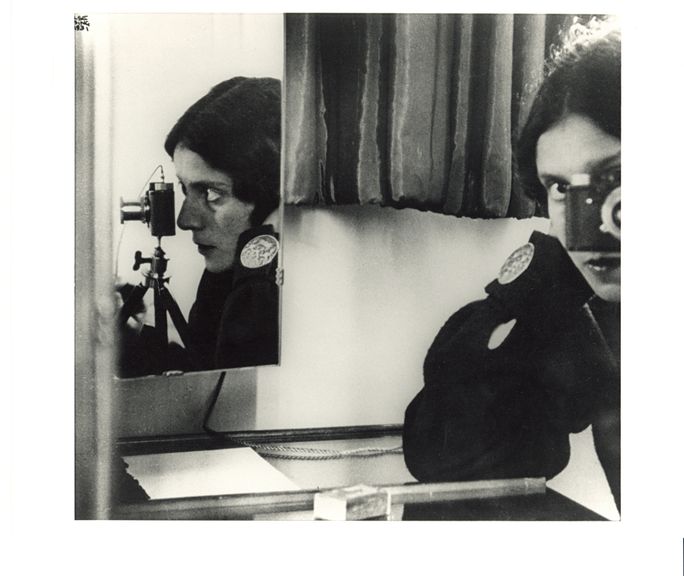
Ilse Bing received her first camera as a teenager and continued to explore the medium as a complement to her doctoral studies in art history. By 1929, she decided to pursue photography professionally and moved from Frankfurt to Paris, where she quickly established herself as a leading photojournalist. A highly experimental printer, she was also among the earliest photographers to adopt the newly introduced 35 mm Leica camera, whose small size and fast shutter allowed her to experiment boldly with angles, cropping, and movement. Bing made numerous self-portraits, including this famous rendering of herself in mirrors, a complex and dazzling image that shows her with her revered Leica. As she later put it, “I felt the camera grew as an extension of my eyes and moved with me.” After the Nazi invasion of France in 1940, Bing emigrated to New York but struggled to establish herself professionally. By 1959 she had stopped making work altogether, and it was not until decades later that her extraordinary talent was recognized and her work entered museums around the world.
Self-Portrait in Mirrors, Paris
Ilse Bing, American, born Germany, 1899–1998
1931, printed ca. 1941
Gelatin silver print
7 5/8 × 8 3/4 inches
Purchase with funds from Georgia-Pacific Corporation
1987.143 -

Hellerhof Settlement, Frankfurt, My Shadow and the Shadow of Architect Mart Stam
Ilse Bing, American, born Germany, 1899–1998
1930
Gelatin silver print
9 × 13 1/4 inches
Gift of the Estate of Ilse Bing Wolff
2001.50 -
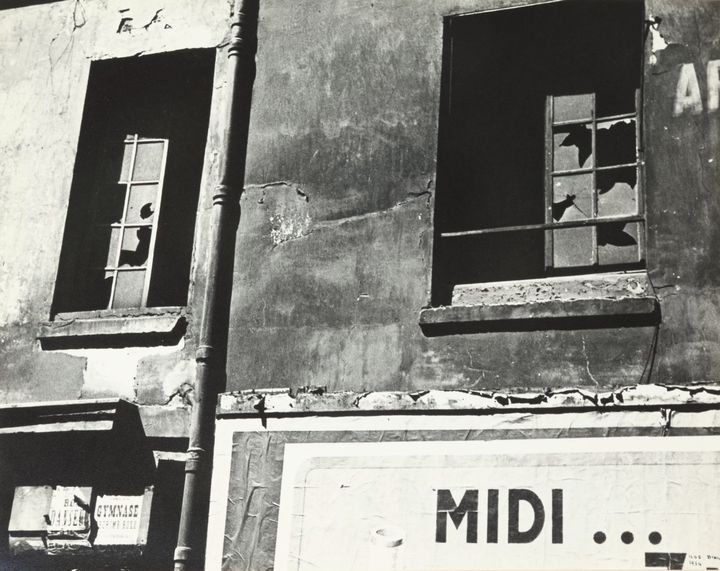
Midi, 7 Heures, “L’Heure du Berger” (The Lover’s Hour) at Broken Window, Paris
Ilse Bing, American, born Germany, 1899–1998
1934
Gelatin silver print
8 7/8 × 11 1/8 inches
Gift of the Estate of Ilse Bing Wolff
2001.45 -
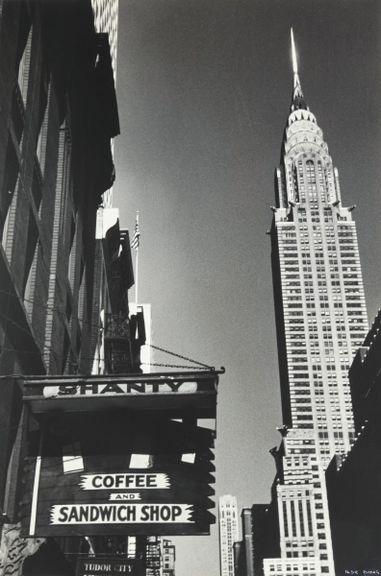
Untitled [Chrysler Building, NY]
Ilse Bing, American, born Germany, 1899–1998
1936
Gelatin silver print
11 × 7 1/2 inches
Gift of the Estate of Ilse Bing Wolff
2001.42 -
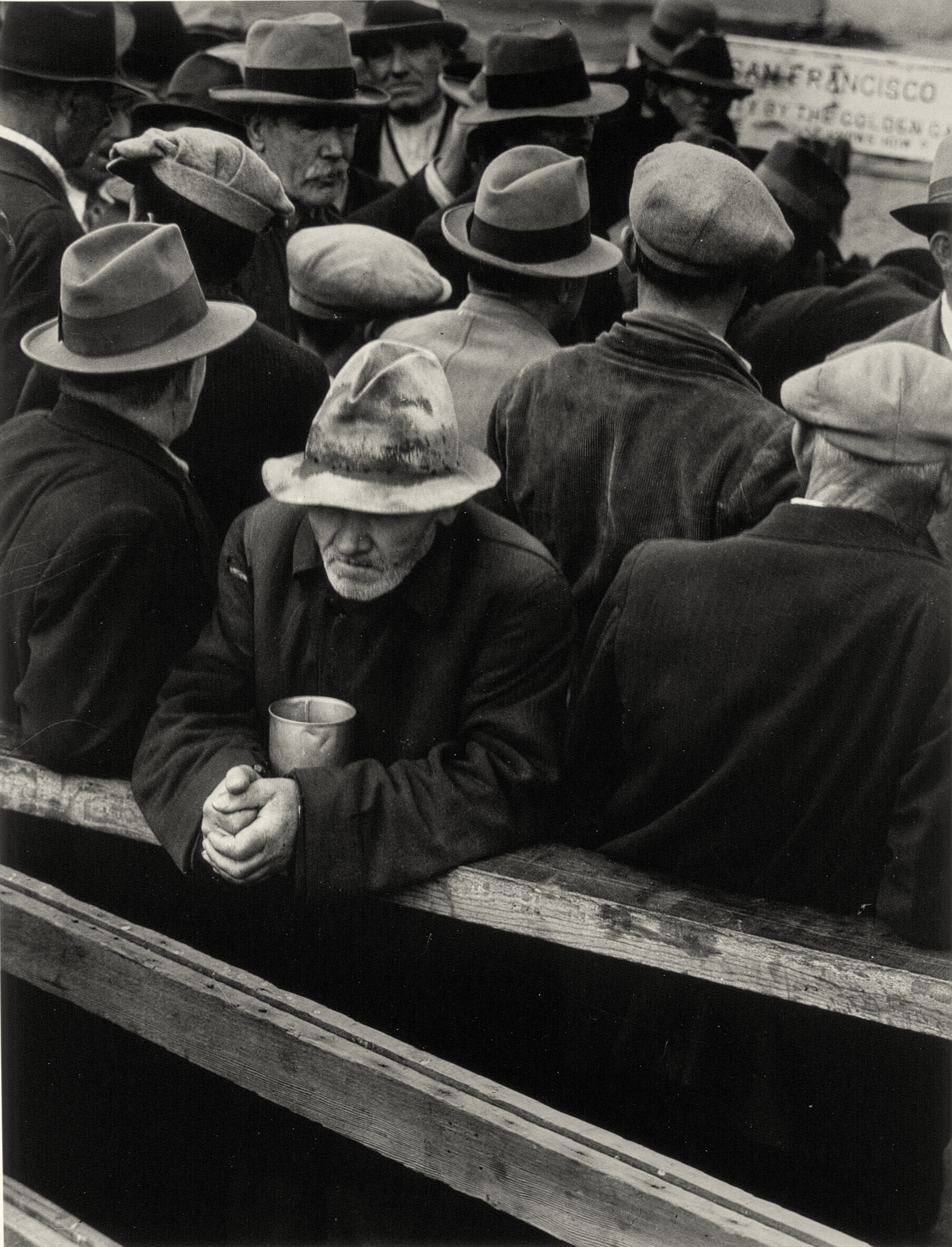
Dorothea Lange was operating a portrait studio in Berkeley, California, when the stock market collapsed in 1929. Soon after, she started making powerfully incisive, socially conscious photographs of the deprivation and despair she observed in San Francisco, where she made this photograph of unemployed workers awaiting assistance in the early years of the Great Depression. She focused on a man leaning on a fence with a set jaw and clasped hands, who is the only figure in the scene facing toward the camera amid the mass of people. His anonymity is retained with the hat pulled low, but through her lens, Lange conveys a larger story about determination, resilience, and pride in the face of hardship. Her innate sense of empathy and photographic skill later distinguished her approach when she worked for the Farm Security Administration documenting the plight of the displaced across America. She eventually became one of the most important voices in twentieth-century documentary photography.
White Angel Breadline
Dorothea Lange, American, 1895–1965
1932, printed ca. 1950
Gelatin silver print
13 1/2 × 10 1/2 inches
Anonymous gift in honor of Thomas W. Southall
1998.110 -
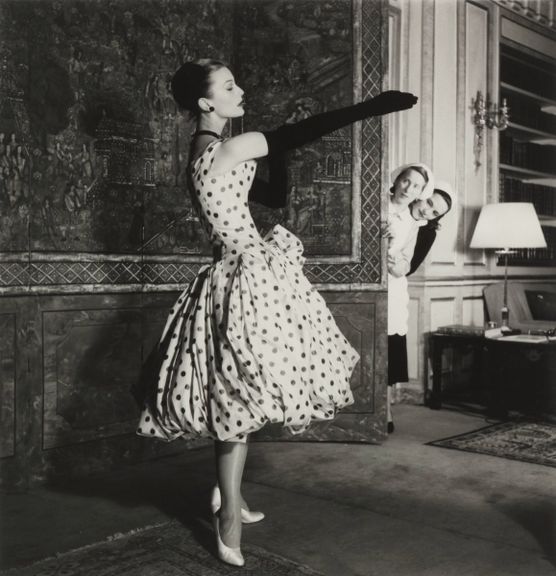
A 1921 visit to esteemed photographer Anne Brigman inspired Louise Dahl-Wolfe, who had graduated from art school, to start making photographic nudes and self-portraits. By 1930, she had established a professional career as a photographer working for a variety of magazines, and in 1936, she became the first female staff photographer at Harper’s Bazaar, where she was celebrated for her fresh, innovative pictures that showed women as strong, confident, and independent. Along with her colleagues, editor in chief Carmel Snow and fashion editor Diana Vreeland, Dahl-Wolfe represented a powerful new female voice in fashion.
Mary Jane Russell in Dior Dress, Paris
Louise Dahl-Wolfe, American, 1895–1989
1950
Gelatin silver print
10 1/2 × 10 inches
Gift of Bim Franklin and Hugh Burke
2017.428 -
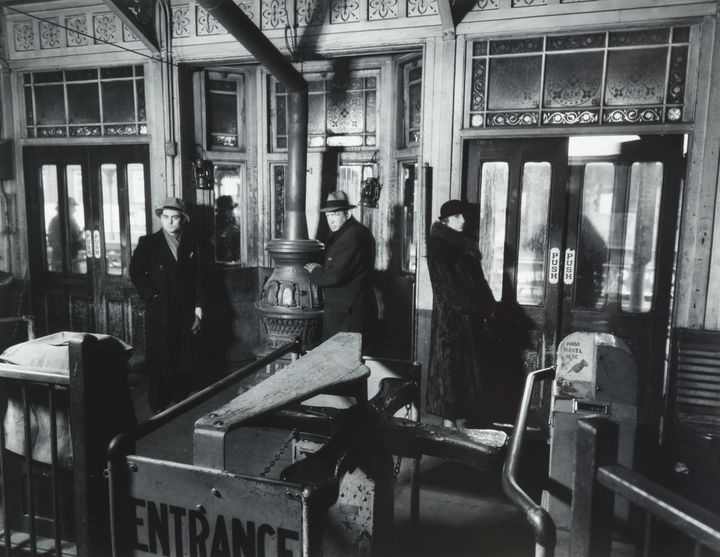
A towering figure of photography, Berenice Abbott learned the craft while assisting artist Man Ray in Paris. By 1926, she had established her own portrait studio, capturing the leading cultural icons of the day. She also befriended French photographer Eugène Atget and became his tireless champion, even rescuing many of his negatives after his death. After returning to New York in 1929, Abbott spent the next decade working on a major project documenting the rapidly transforming cityscape, which she published in the 1939 book Changing New York, produced with her partner, art critic Elizabeth McCausland. Although known for her urban views, in the 1950s, Abbott started working with Massachusetts Institute of Technology to explore the potential for photography to illustrate scientific principles and phenomena, as shown in the middle picture.
“El” Station Interior, Sixth and Ninth Avenue Lines, Downtown Side
Berenice Abbott, American, 1898–1991
1936, printed later
Gelatin silver print
10 3/8 × 13 3/8 inches
Purchase with funds from a friend of the Museum
74.57 -
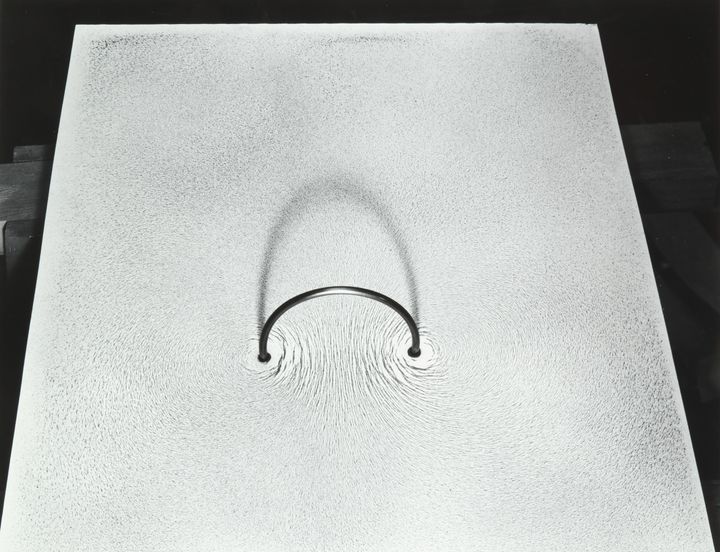
Steel Filings Show the Magnetic Field Around a Loop
Berenice Abbott, American, 1898–1991
1958–1960, printed later
Gelatin silver print
10 1/2 × 13 1/2 inches
Purchase with funds from a friend of the Museum
74.112 -
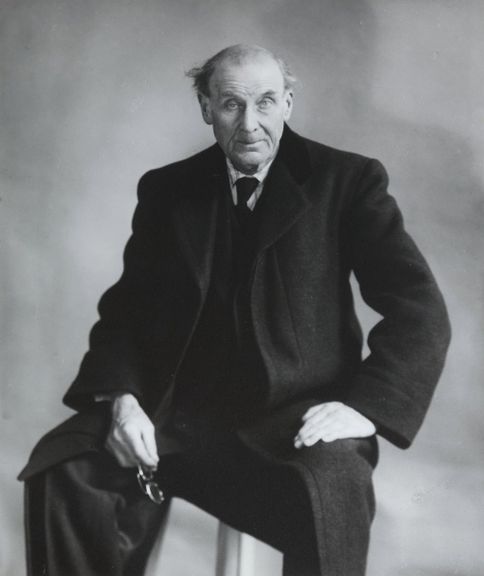
Portrait of Eugène Atget
Berenice Abbott, American, 1898–1991
1927, printed later
Gelatin silver print
9 1/2 × 7 7/8 inches
Purchase with funds from a friend of the Museum
74.60 -
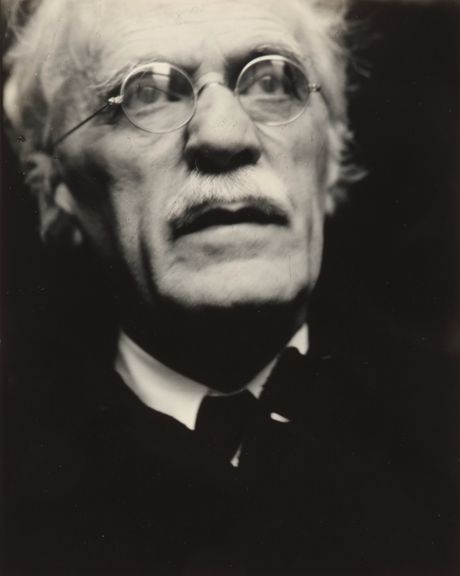
Dorothy Norman was a prominent photographer, writer, editor, social activist, supporter of humanitarian and women’s causes, and arts patron. Her work has often been relegated to the sidelines of photographic history, as she is better known for her affair with her mentor, photographer Alfred Stieglitz, than for her contributions to photography. These include a rich selection of witty, probing portraits of friends and prominent cultural figures and a smaller, lesser-known body of photographic studies including intimate still lifes, landscapes, and architectural views. She was also editor of an important arts journal and author of numerous books on art and photography.
Alfred Stieglitz
Dorothy Norman, American, 1905–1997
ca. 1930
Gelatin silver print
3 9/16 × 2 7/8 inches
Purchase with funds from Georgia-Pacific Corporation
1986.127 -
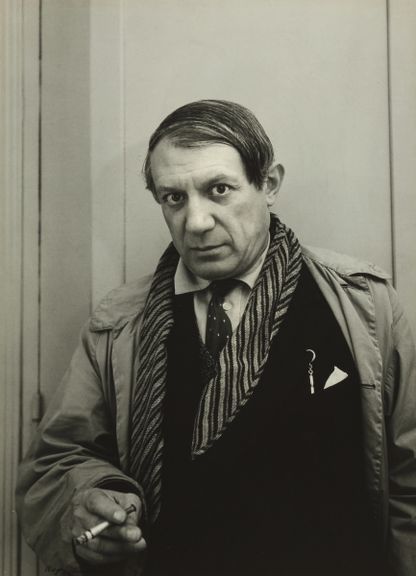
Trained as a painter in Budapest, Rogi André moved to Paris in 1925, where she befriended many emigre artists, including fellow Hungarian André Kertész, whom she married in 1928 (her professional name is fashioned from each of their first names). Although the latter taught her the fundamentals of photography (and then promptly divorced her), she quickly established her own reputation as a talented portraitist, with the keen ability to capture her sitters in informal, appealingly natural poses.
Portrait of Picasso
Rogi André, Hungarian, 1905–1970
ca. 1935
Gelatin silver print
15 3/16 × 11 1/16 inches
Purchase
74.152